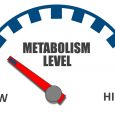Healthy Cooking 101
If you’re trying to improve your health, one of the first things you can do is improve the way you cook your food. But when people talk about healthy cooking, it can sound a little intimidating and a little less than delicious.
But healthy cooking doesn’t have to be difficult or boring. With just a few small changes you can make a big difference in the health of you and your family. Once you get used to doing things a different way, it will become simple and easy.
Forgo Deep Frying
One of the easiest ways to lower the fat content of your food and boost your heart health is to skip frying foods. When you fry foods, you add a large amount of oil to your food. While fat is something that your body needs, it doesn’t need it in such high amounts.
Fat is full of extra calories, so the oil you’re adding to your food will sneak in many extra calories you don’t need if you’re working to eat healthy. In addition, most oils used for frying are not the healthiest kind for your heart.
Instead of deep frying your foods, there are a few different ways you can cook them. If you’ve never tried cooking with these methods, you’ll have to experiment to see which one works best for you.
Grilling
One of the healthiest ways to cook is to use your grill. There are several different types of grills. If you prefer to use outdoor grills, you can use charcoal or propane. Gas grilling is quicker, but doesn’t have the same flavor.
Grilling can also be done indoors. There are many indoor grill models available for purchase. Indoor grills won’t give you the smoky flavor that you get from outdoor grills. However, they help you to eliminate extra fat from cooking and allow you to cook foods quickly.
Baking and Broiling
Using your oven is another option. Old fashioned baking and broiling produces delicious food without having to add excess fat. Baking is the process of cooking your food evenly. When you broil food, you use only the top element of your oven.
With baking you get a constant temperature in the oven and your oven will cut off and on to keep that steady temperature. With broiling, the top element will stay on constantly. This can produce the same type of effect as grilling your food.
Broiling works well for cooking steaks and other types of meat. You’ll have to turn the pieces of meat over in order to get consistent cooking on both sides. You’ll also need a broiler pan that allows fat to drip through to the bottom away from your food.
Pan Frying
You can sauté your food in a pan as well. This is a type of frying, but you don’t need as much oil as you do with deep frying. For this type of frying you can usually use one or two tablespoons of oil as opposed to a quart of it.
You can also use the most heart healthy oils with pan frying. You’ll want to use oils that are monounsaturated. These oils actually help you to lower your cholesterol. Extra virgin olive oil is generally the best choice for heart health.
Steaming
Steaming is another powerful way to cook. This is especially good for cooking vegetables. You can purchase a special steamer that plugs into the wall or you can actually convert a pan into a steamer by inserting a special steaming basket.
With steaming, you’ll add a little water to the pan, then add the steaming basket. You’ll place your veggies on top of the basket. The water won’t actually cover the vegetables at all. You’ll then need to put a lid on the pot.
As you heat the water at the bottom of the pan, it creates steam that will surround the food and cook it. Steaming doesn’t take a long time and it’s one of the best ways you can cook to preserve the nutrients in your food.
Slow Cooker
One of the greatest tools you can purchase for your kitchen is a slow cooker. This is a healthy way to cook and can really be a timesaver in your life. With slow cookers you can add ingredients to the pot, set the temperature, and then walk away for hours.
This is especially helpful if you have a job outside of your home or just a very busy schedule. You can put healthy foods in to cook but then you can continue with your activities knowing that you’ll have a great meal for dinner.
The biggest complaint people have about slow cookers tends to be the cleanup. However, there are liners now you can place inside your slow cooker that make cleaning it much easier. You simply throw them away when you’re done.
Choosing Healthy Fats and Substitutions
Many times when people begin to work to cook and eat healthy foods, they try to eliminate fats from their diet. However, your body needs fats in order to function properly. You’ll need to understand the difference between healthy fats and unhealthy fats.
Unhealthy fats are those that are saturated. Saturated fats are solid at room temperature. You find these fats in meats and dairy products. You also find them in lard. These are the fats that can clog your arteries and cause you to have heart problems.
Unsaturated fats are liquid at room temperature. They’re healthier for the body and actually contribute to good heart health – especially monounsaturated fats. These fats come from plant sources. Some foods where you can find healthy fats include:
- Olive oil, safflower oil, soybean oil
- Flaxseed oil (can be added to food, but not used to cook)
- Avocados
- Bananas
- Nuts – almonds, walnuts, pecans, cashews, etc.
When you’re cooking, you’ll want to use these types of fats as much as possible. Adding nuts or avocado to a dish can boost the heart healthy fats. And they also add delicious flavor and boost the excitement of healthy meals.
When you’re baking, you can also make substitutions for fats. For example, if a cake or brownie recipe calls for oil you can substitute applesauce or carrot puree. These will give the same texture and moisture without the fat.
If you’re not ready to go completely away from the oil, try substituting half of the oil for applesauce. This will give you the best of both worlds. In many recipes, the oil can be cut in half without significantly changing the texture. You may want to experiment with our favorite recipes.
Eliminate Excess Sugars
Sugars are another area where people tend to have too much of a good thing. You need to have sugars in order for your brain to work. But the types of sugar that you eat can make a difference. Eliminating processed sugars can boost your healthy cooking.
Ingredients such as white granulated sugar, brown sugar, and powdered sugar can be tasty, but aren’t great choices for cooking healthy foods. Instead, you can try to have sweetness through more natural ingredients.
Honey and molasses are natural sources of sugar. Raw cane sugar is also a natural source of sugar. While these choices are natural and less processed than other types of sugar, you’ll still want to use them in limited quantities. A little goes a long way.
Even better is to get your sources of sweetness from fruits. They naturally contain sugar that can satisfy your sweet tooth while still delivering nutrients to your body. The sugar you get from strawberries, apples, or grapes provides satisfying sweetness and also delivers fiber and vitamins.
In addition to getting sugar from sweet foods, many people get a lot of sugar from the drinks they consume. Sugary sodas, sweet teas, and juices can give you a lot of calories without giving much in the way of nutrition. This is a great place to start eliminating sugars from your life.
Switch to water with lime or herbal teas that are flavored naturally. If you want to add sweetness, try a natural sweetener such as stevia to add that punch. Other calorie free sweeteners can be less healthy.
There are many dessert options using fruits and other healthy ingredients that can help you to get the sweetness you crave without sacrificing your health. As you eliminate sugar, you’ll get to a point where you really don’t crave it as much.
Lowering Your Sodium
Another considering with healthy cooking is lowering the amount of sodium, or salt, in your diet. Salt can cause problems with high blood pressure and bloating. While you need some salt in your diet for good health, most people get too much.
When shopping for ingredients, look for items labeled as “low sodium” or “sodium free.” This way you can control how much salt you add to your meals. When you do use salt, choose natural sea salt.
Add Flavor
For many people the idea of healthy cooking is synonymous with bland food. But if you’re going to cook healthy it’s critical that you enjoy what you’re eating. Otherwise you won’t be able to adopt these techniques long-term.
It’s important to make sure that while you’re eliminating unhealthy fats and sugars that you don’t forget to add flavor. Natural spices and herbs can be the best way to enhance the flavor of your food and can boost your health, too.
If you haven’t used many spices before, now is the time to add spice to your life. The following spices are critical to have in your pantry as you make the switch to healthy cooking:
- Cinnamon
- Garlic
- Pepper (black, red, white, cayenne)
- Nutmeg
- Paprika
- Salt-free seasoning
- Italian seasoning
- Basil
As you continue to cook, you’ll add more and more spices to your supply. But these are general spices that can get you started. You’ll also want to consider keeping fresh herbs on hand. Growing your own is the least expensive way to enjoy them.
As the season begins to end, you can chop up your herbs and freeze them in ice cube trays. This way you can continue to enjoy them year round. Some great herbs to get started with include the following:
- Parley
- Oregano
- Thyme
- Sage
- Cilantro
- Basil
- Rosemary
Adding fresh spices will make any dish more flavorful. Remember that healthy cooking doesn’t have to be boring and bland. The more flavor you add, the more you’ll enjoy what you’re eating. If you enjoy the food you eat when cooking healthy, you’ll be more likely to make a long-term change.
If you’re not familiar with cooking healthy, it can take some time to adjust. But as you add a new technique you’ll find that it can be easy and rewarding. As you cook more and more, you’ll begin to feel comfortable with experimenting with recipes – and unleashing your inner chef can also be a lot of fun.

















